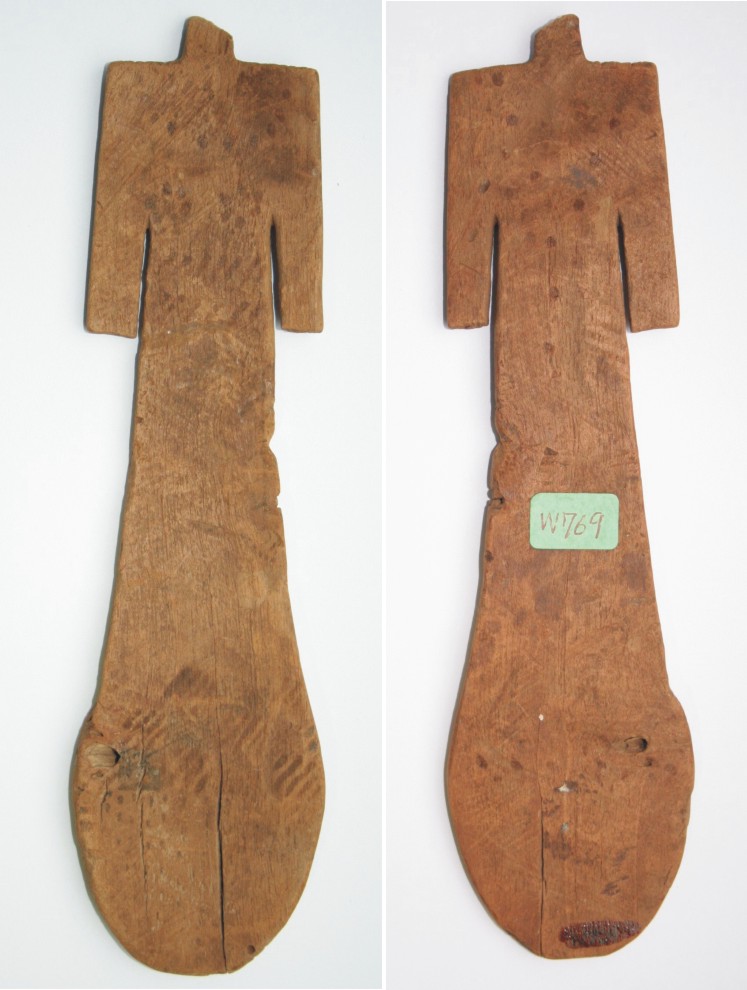W769
W769 Paddle Doll
 This flat, paddle shaped, wooden figure was purchased by Sir Henry Wellcome at a Sotheby’s auction in 1919.
This flat, paddle shaped, wooden figure was purchased by Sir Henry Wellcome at a Sotheby’s auction in 1919.
Such dolls are usually found in Upper Egypt. When complete they have faces and hair consisting of strings of clay or faience beads. This one is missing its hair. A number have been found dating to the second half of the 11th Dynasty from tombs in the neighbourhood of Deir el-Bahri and are common at Thebes. However, at least two have been found in earlier tombs at Beni Hasan and one at Rifeh. Another was found beneath the Ramesseum, at Thebes dating to the 13th Dynasty (Bourriau 1988, 126–127). Most are of 11th Dynasty to Middle Kingdom.
The marks on the body are thought to be tattoos or scarification and the end of the paddle, it has been suggested, is an exaggerated pubic area. That such dolls are found mainly in female graves has led Egyptologists to suggest that these are fertility figurines put in graves to ensure fertility in the afterlife.
Tattoo and scarification marks have been found on some Egyptian female mummies of the 11th Dynasty. These tattoo and scarification marks, being abstract dots and lines in geometric patterns, are similar to those shown on the paddle dolls.
There are also later New Kingdom depictions of women having marks of the god Bes on their upper legs, perhaps to ensure fertility. Whether these latter were tattoos, scarification marks or body paint is unknown. During the Dynastic Period, it seems that evidence for scarification or tattooing of Egyptians seems confined to women.
The shape of their bodies has been compared to the counterpoise of an Egyptian necklace called a menat. It has been suggested that both are stylized versions of Hathor’s body.
Other fertility figurines in the Egypt Centre
Further Reading
Bourriau, J. 1988. Egyptians and Mortals. Egyptian Art in the Middle Kingdom. Cambridge University Press.
Capel, A.K. and G.E.Markoe, eds., 1997. Mistress of the House Mistress of Heaven. Women in Ancient Egypt. Hudson Hills Press.
Hayes, W.C. 1953. The Sceptre of Egypt. Metropolitan Museum of Art.
Keimer, L. 1948. Remarques sur le Tatouage dans l’Egypte Ancienne. Cairo.
Poon, K.W.C. and Quickenden, T.I. 2006. A Review of Tattooing in Ancient Egypt. The Bulletin for the Australian Centre for Egyptology, 17, 123-136.
Tassie, G.J. 2003. Identifying the Practice of Tattooing in Ancient Egypt and Nubia. Papers from the Institute of Archaeology 14, 85-101